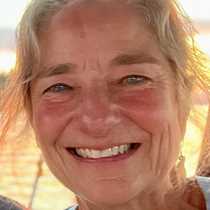When we awoke this morning, there were humpback whales all around the ship. In groups of twos, threes and fours, they breathed and sounded energetically. We watched them feeding in the dark, green productive waters at the northeast end of Kupreanof Island. This is one of several areas in southeast Alaska where currents and water masses converge, bringing nutrients to the surface. Plankton flourish, feeding krill, fish and ultimately, whales.
We adjusted our course to the west, and just as we were about to make a right-hand turn around the southern tip of Admiralty Island, we saw more whales. Finding orcas is always a thrill. . .they can move quickly, and are quite unpredictable. The orcas were here for the same reason the humpbacks were at the other location. Wherever water masses converge, the mixing brings nutrients closer to the surface. Plankton, krill, fishes, birds and whales tend to be abundant. About twenty orcas traveled in three groups. Perhaps they were feeding on salmon . . .using distinctive markings on the dorsal fins, we identified them as members of AF pod; whales known as “fish-eating” orcas. Their preferred food is salmon. We had sat down to a delicious meal of wild Alaskan salmon three nights earlier. Bald eagles, bears, and orcas all eat salmon. . .and we eat it, too. The fishing boat in the photo purse seines for salmon, using a large skiff and net to encircle a school of fish. The orca in the foreground uses echolocation, experience, and about 40 conical teeth.




